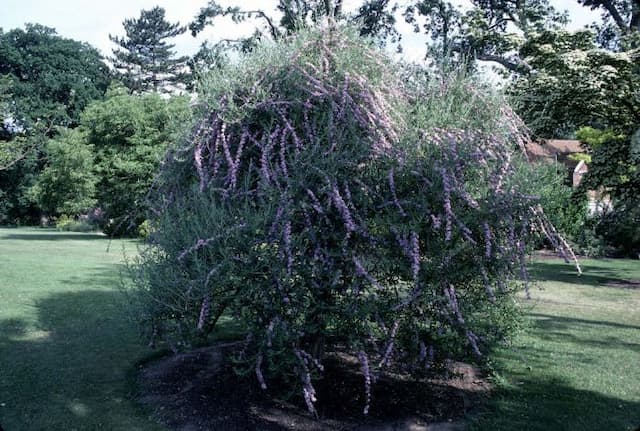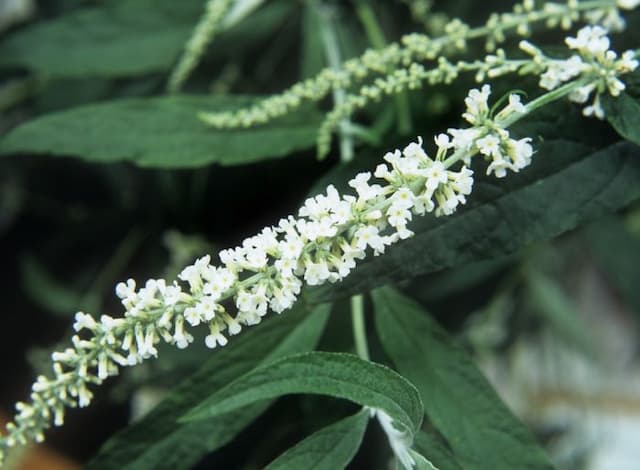Twinspur Diascia barberae 'Ruby Field'

ABOUT
Diascia barberae 'Ruby Field', also known as Twinspur, has a charming and vibrant appearance that exudes a sense of warmth and vitality. This perennial showcases an abundant bloom of dainty, ruby-red flowers, each with a unique, spurred shape that gives the plant its common name. The flowers carry a lush and velvety texture and are clustered closely together, creating a dense, colorful display that seems to dance above the foliage. The leaves of the Twinspur are equally appealing, with a lush, bright green hue that contrasts beautifully with the red flowers. They are typically small and narrow, with a slightly heart-shaped base and a pointed tip. The leaves form a low, mounded cushion that spreads gently around the red blossoms, providing a fresh and tidy backdrop for the floral show. Overall, the Twinspur presents a harmonious blend of vivid flowers and lively green leaves, forming a visually appealing plant that brightens gardens with its cheerful color palette and graceful form.
About this plant
 Names
NamesSynonyms
Twinspur
Common names
Diascia barberae 'Ruby Field'.
 Toxicity
ToxicityTo humans
Diascia is not known to be toxic to humans. There are no well-documented cases of poisoning from ingesting this plant, and it is generally considered safe around adults and children. However, as with any plant not intended for consumption, it's possible that some individuals might experience a mild stomach upset or an allergic reaction if ingested. If you suspect any kind of poisoning from any plant, it is advisable to consult a medical professional.
To pets
Diascia is generally considered to be non-toxic to pets. There are no common reports of serious illness or symptoms associated with pets ingesting this plant. However, individual pets could have allergies or adverse reactions to non-toxic plants. If any unusual symptoms occur after your pet has ingested this plant, it's best to contact a veterinarian.
 Characteristics
CharacteristicsLife cycle
Perennials
Foliage type
Evergreen
Color of leaves
Green
Flower color
Ruby
Height
1 ft (0.3 m)
Spread
2 ft (0.6 m)
Plant type
Herb
Hardiness zones
9
Native area
South Africa
Benefits
 General Benefits
General Benefits- Attracts Pollinators: Diascia, commonly known as Twinspur, is particularly attractive to bees and butterflies, which play a crucial role in pollination.
- Low Maintenance: Twinspur is easy to care for, requiring minimal maintenance once established in the right conditions.
- Aesthetic Appeal: With its vibrant 'Ruby Field' flowers, this plant adds a burst of color to gardens and landscapes.
- Extended Blooming Season: Twinspur typically has a long flowering period from late spring to the first frost, offering long-lasting visual interest.
- Versatile Use: Suitable for borders, containers, and hanging baskets, providing flexibility in garden design and space utilization.
- Drought Tolerance: Once established, Twinspur has moderate drought tolerance, making it suitable for regions with occasional water scarcity.
- Ground Cover: Its mat-forming growth habit makes it an excellent option for ground cover, helping to suppress weeds and reduce soil erosion.
 Medical Properties
Medical PropertiesThis plant is not used for medical purposes.
 Air-purifying Qualities
Air-purifying QualitiesThis plant is not specifically known for air purifying qualities.
 Other Uses
Other Uses- Twin spur (Diascia barberae 'Ruby Field') can be used as a ground cover in mixed borders, due to its spreading habit and dense foliage.
- Due to its vibrant color, twin spur can be used for natural dyeing of textiles, providing a range of pink and coral hues.
- In mild climates, twin spur can function as a living mulch, retaining soil moisture and suppressing weeds.
- The nectar-rich flowers of twin spur can be used to create a themed garden aimed at attracting and supporting pollinators like bees and butterflies.
- This plant's trailing nature makes it suitable for use in hanging baskets or over the edges of raised planters for cascading visual effects.
- Twin spur can be planted alongside vegetable plots as an ornamental companion plant to enhance the aesthetic appeal of kitchen gardens.
- Landscapers can use this plant for erosion control on gentle slopes due to its mat-forming growth.
- When used in sensory gardens, twin spur provides a soft, touchable texture for tactile exploration.
- The flowers of twin spur can be added to salads, as an edible garnish, for a touch of color and subtle flavor.
- In frost-free regions, twin spur can be cultivated as a perennial border plant to line pathways and define garden sections.
Interesting Facts
 Feng Shui
Feng ShuiThe Diascia is not used in Feng Shui practice.
 Zodiac Sign Compitability
Zodiac Sign CompitabilityThe Diascia is not used in astrology practice.
 Plant Symbolism
Plant Symbolism- Attraction: Diascia, also known as Twinspur, often symbolizes attraction due to its brightly colored flowers that attract pollinators.
- Charm: The delicate appearance and vibrant colors of Twinspur are often associated with charm and the ability to draw one's attention effortlessly.
- Companionship: Twinspur plants are known to grow well in clusters, symbolizing the importance of companionship and togetherness.
- Endurance: As a plant that can thrive in tough conditions, Twinspur signifies endurance and the ability to withstand challenging environments.
- Opportunity: The growth pattern of Twinspur, spreading quickly and blooming prolifically, is symbolic of seizing opportunity and proliferation.
 Water
WaterWhen watering Twinspur, it is important to keep the soil consistently moist but not waterlogged. During active growing periods in the spring and summer, water the plant thoroughly once or twice a week, depending on climate conditions and soil drainage. In general, aim for about one inch of water per week, which could translate to approximately half a gallon for a medium-sized pot. Reduce watering frequency in the fall and winter when the plant's growth slows. Always check the top inch of soil for dryness before watering to avoid overwatering, as this can lead to root rot.
 Light
LightTwinspur thrives in full sun to partial shade conditions. The best spot for this plant is one where it can receive at least 6 to 8 hours of direct sunlight per day. However, in very hot climates, some afternoon shade can help prevent the foliage from scorching. An east or west-facing garden that gets plenty of morning or late afternoon sun would be ideal for vibrant growth.
 Temperature
TemperatureTwinspur prefers moderate temperatures and can tolerate a range from about 40 to 80 degrees Fahrenheit. The ideal conditions for robust growth are daytime temperatures between 65 and 75 degrees Fahrenheit. It's important to protect the plant from frost, as temperatures below 40 degrees Fahrenheit can be detrimental and may kill the plant.
 Pruning
PruningPruning Twinspur is essential for maintaining a bushy, attractive shape and encouraging more blooms. It should be done regularly by deadheading spent flowers to promote continuous blooming throughout the growing season. Additionally, light trimming of the stems after the first flush of flowers can rejuvenate the plant and lead to a second burst of blooms. The best times for pruning are late spring and midsummer.
 Cleaning
CleaningAs needed
 Soil
SoilTwinspur requires well-draining soil with a mix of peat, loam, and sand to ensure good drainage; soil pH should be slightly acidic to neutral, around 6.0 to 7.0.
 Repotting
RepottingTwinspur should be repotted every 1 to 2 years to refresh the soil and accommodate the plant's growth.
 Humidity & Misting
Humidity & MistingTwinspur thrives in moderate humidity levels but is adaptable and can tolerate the lower humidity levels typically found in homes.
 Suitable locations
Suitable locationsIndoor
Place Twinspur in bright, indirect light and keep soil moist.
Outdoor
Plant Twinspur in full sun to partial shade with moist soil.
Hardiness zone
9-11 USDA
 Life cycle
Life cycleDiascia barberae 'Ruby Field', commonly known as Twinspur, begins its life cycle as a seed which germinates in spring when the temperature and soil conditions are favorable. Seedlings emerge and establish a root system, followed by the development of foliage as the plant undergoes vegetative growth. As the Twinspur matures, it develops distinctive flowers, typically ruby or pink, which attract pollinators and are integral to its reproductive stage. After pollination, the plant produces small capsules containing seeds, completing its reproductive cycle. In favorable conditions, Twinspur may act as a perennial, surviving through the winter to regrow in the spring; in colder climates, it is treated as an annual and completes its life cycle within one growing season. At the end of its life cycle or growing season, the plant senesces, with seeds dispersing to begin the cycle anew.
 Propogation
PropogationPropogation time
Spring to summer
Propogation: The Twinspur 'Ruby Field' is commonly propagated via cuttings, which is the most popular method. This practice can be especially productive during late spring to early summer when plant growth is vigorous. To propagate using cuttings, select a healthy, non-flowering stem and cut a 4 to 6 inch (10 to 15 cm) length just below a node. Remove the leaves from the lower half of the cutting, dip the cut end into rooting hormone powder to encourage root development, and then plant the cutting into a moistened potting mix. Cover the cutting with a plastic bag or place it in a propagator to maintain humidity, ensuring good air circulation to prevent rot. Roots usually develop in a few weeks, after which you can transplant the new Twinspur 'Ruby Field' into its final location.




![Butterfly bush [Florence]](/_next/image?url=https%3A%2F%2Fplants-admin.emdemapps.com%2Fimages%2Fplants%2F%2Fimages%2F604b5f52d7bb1.png&w=640&q=75)




